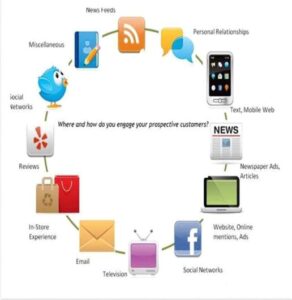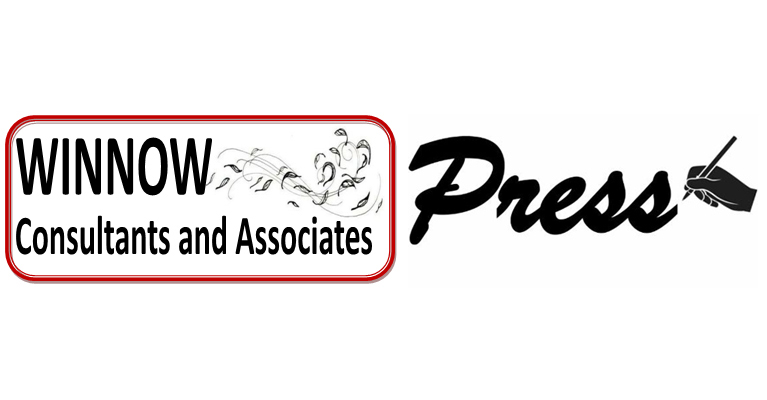10 things I can do to help Reinvent and Save my Business
10 things I can do to help Reinvent and Save my Business

We are in a crazy, fast-paced, knowledgeable world where, primarily because of quick and easy access to information, the dynamism of needs of the modern society can be a nagging incessant headache for the business owner. Today, information on quantity, quality, cost, functionality and even desired colour is placed in the grasp of the average consumer and thus enhances the customers’ knowledge and sophistication of demand.
The details of the “next best thing” are consumed by the customer, in many cases, even before the product is produced for the market. Zygmunt Bauman, a Polish sociologist and author of books such as Liquid Modernity (2000) and Liquid Times (2007), described the world as a place where there is rapidly increasing dissonance between the desire for consumption and the rate of production and/or resulting response to varying needs. In this framing, Bauman states that our post-modernistic world is a place where people still want what they want, where they want it, when they want it, at a reasonable cost, but additionally, he also shows that they may want it in great amounts today but with just a hint of the next fad, not want it at all tomorrow. Gone are the days when one can say “they can have any colour car they want, once that colour is black!!”

The impact of changing needs and demands have created immense turmoil within the business community and has led to business reactions such as re-engineering of structures and processes, the creation of “unlikely” strategic alliances, exploitation of resources globally and even filing for bankruptcy. It has become more and more apparent that business strategists must inevitably and effectively steer businesses through a maze of “pop-up” and rescinding market forces if the company is to survive.
Analysing this scenario intraorganizationally, it could be realized that it is so easy for great businesses to handle this scenario poorly and end up swinging suddenly from being very successful to bankrupt in but a small fraction of the time it took for them to build their successes.
The Harvard Professor Clayton Christensen, author of the book “The Innovator’s Dilemma”, has stated that most companies are developed around a formula (a Standard Operating Method) or business model that determines/dictates exactly what they must do to make profits and grow. Within that model, there are sometimes strict processes and procedures that contribute incrementally to the value of the product and/or service that is offered for sale to their customers. The company that has the best formula is usually the industry leader with the lowest cost of production, best marketing strategies, largest margins, effective culture and streamlined operational processes. To maintain their lead, these industry leaders usually reinvest into their companies to further “perfect” their operations, increase their revenue and extend their lead. In most cases, the focus is on reducing defects and incrementally improving the offering to customers. If solely done in the twentieth century, this could have been considered enough to enable the sustainable development of the company and its continued prowess within the industry. In today’s society, however, the same activity can quickly render the company bankrupt or even non-existent.
Business strategists must now appreciate that, due to the ever-changing demands of the post-modernistic society, their businesses cannot continue to use industrial age strategies and tactics in the post-information age (knowledge age). Companies today must now employ new strategies that will enable them to be nimble enough, to rapidly respond to changing demands while simultaneously be innovative enough, to be able to lead the demand by trendsetting and producing the next big thing. This adaptation can be seen with international companies such as 3M, Apple and Samsung or locally with Machel Montano HD and S.M. Jaleel.
Through research and discussions with fellow consultants, I will offer the following suggestions/tips that can aid.
- Constantly challenge your business model.
The era of “this is how we do things here” is over. Businesses must constantly analyse and reanalyse their business models not only to become more efficient in the short term but also in understanding that the business model has a lifespan and in the long term it must be remodelled or even discarded. - Ensure that your company remains innovative.

Look over your business model for relevance. Ensure that innovation is part of it Being entrepreneurial is not only about starting businesses but also sustaining it. Entrepreneurship that takes place intra-organizationally known as “intrapreneurship” must always be encouraged within the organization. Companies must facilitate an intra-organizational culture of idea creation, Research and Development, and knowledge development. There must also be an understanding that knowledge is eclectic and thus all employees must be given the opportunity, incentive and support to contribute to the development of innovation within the company. Revisit your organizational structure so that it can facilitate innovation (this can also mean headhunting new staff, outsource expertise and even align the company with a university/research institution).
- Ensure that market information flows in and promotional messages effectively flow out.
Emphasis must be made on the design and construction of efficient and effective inward flowing
information pathways. This will ensure that the needs, wants and tastes of the consumers can readily be received so that operational adjustments can be effectively made. The focus must also be placed on the strategic responses of competitors to market as the competition for market share remains the focus of all competing firms. The use of market information will enable the company to respond more readily to the twists and turns of the market demands. It must always be remembered the reduction in response time equals a reduction in the risk of becoming obsolete. - Invest in Innovation consistently.

Invest in Ideas Please note that research and development and the development of innovation within the company come with a cost. Sometimes the cost is not readily reclaimed through profits and in some instance not reclaimed at all. The innovation process can be risky but taking that risk may present the opportunity that can make or break the company. It must be stated that innovation can be process-oriented (changes in the operations of the company e.g. improving production technology), product-oriented (Changes in the product e.g. colour options, more usability) or both. Not all innovation is revolutionary (totally changes the sophistication of the market) but it can be evolutionary where incremental changes can be seen.
- Invest in smaller up-and-coming businesses.

Protect, nurture and mentor a small business. It may provide financial buoyancy if your industry declines According to Clayton Christensen, larger companies find it more difficult to adjust to innovation within the market than smaller ones. Sometimes the millions invested and solidified culture can be a restriction for the larger company. To combat this, larger companies should try to invest in smaller promising companies within the same industry. This enables a transition of resources particularly in the case where the product and/or services provided by the larger company are fast becoming replaced by a substitute in the market.
- Create a heart-warming brand and marketing strategy – a story.
Marketing of a product or service today must focus on creating an emotional connection with the consumer and potential consumer. It is stated that marketing must romance consumers to build loyalty to the product or service. The most effective way to do this is to create/tell a story that all consumers can relate to, thus creating a connection beyond just the usage of a great product/service. - Include non-conventional promotional channels in your promotional marketing.
The newspaper, television, radio and even the loudspeaker are becoming more and more archaic ways of promoting offerings. The use of social media enables the consumer to be targeted far more directly when they are engaging in activities that they enjoy. These direct social promotional pathways have been gaining traction as more and more persons are turning to social media for all their information and entertainment needs. Any organization that does not use non-conventional/social media in their advertising is at risk of being left behind by their competitors who do. - Define the needs of people in your industry more loosely.
The needs of the consumer must be defined loosely so that it enables the company to view the market with a wider scope and thus see additional possibilities and opportunities. For instance, a company that defines itself as a “car producing company” reduces its scope and possibilities as compared to a company that calls itself a “company that provides transport options”. - Sell-off some shares of your company.
Many companies that are started within a family or by the hard work of founders tend to find it difficult to sell shares of the company they worked so hard to build. This is a necessary evil if the business is to continually expand. The involvement of new persons in the business, that have a vested interest can present innumerable possibilities as new ideas and strategic linkages can always provide more opportunities. Please note also that the more owners a company has, the greater the spread of risk among owners. - Find ways to form an alliance with your competitor.

Coopetition – My competitor and Partner Fighting individually within an industry for market share can be taxing on a company. Many companies particularly those in a mature industry try to acquire and strategically align themselves with other companies. Alliances, like in cooperatives, enable companies to have better bargaining powers with suppliers, Government Unions and other stakeholders, maintain average prices within the industry, and prevent new competition from entering the market.
In closing, it must be mentioned that the foregoing pointers are generic suggestions and thus Company strategist must note that each company and industry has idiosyncrasies not only within themselves but also in their interaction within each other. It is, therefore, the job of the strategist to identify the plausible and palatable strategies that will be required to achieve the vision that was promised to all the stakeholders of the business.












Leave a Reply